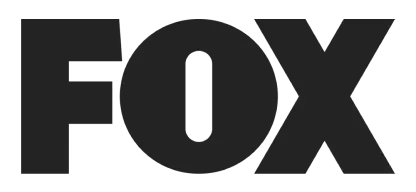Cooper Surgical IVF Solution Lawsuit
In vitro fertilization-embryo transfer (IVF-ET), commonly known as IVF, has been a long-standing service helping couples become families and grow their families after finding they cannot conceive without help. Last December 2023, CooperSurgical notified fertility clinics of an urgent recall of embryo culture media that may stunt embryo growth. Though CooperSurgical has yet to announce the recall publicly, the FDA announced on February 14, 2024, for a Global Medium product recall from CooperSurgical, available in three sizes.

FREE CASE REVIEW
Home > Defective Drug Attorneys > Cooper Surgical IVF Solution Lawsuit
Countless couples have been and continue to be affected by the defective solution, suffering the terrible loss of their chance to build a family. CooperSurgical’s negligence in producing and distributing unchecked quality products led to hundreds–if not thousands–of embryo losses.
Please contact Farah & Farah for a free consultation if you’ve been a victim of the CooperSurgical IVF recall. The IVF lawyers at Farah & Farah will give you undivided attention, steadfast support, and expert legal representation throughout the process and will work to get you the best possible outcome.
What Is Embryo Culture Media?
Embryo culture media is essential to the success of IVF, Zygote Intrafallopian Transfer (ZIFT), and Frozen Embryo Transfer (FET). It is a liquid that closely imitates the natural environment of the womb and provides vital nutrients (e.g., sodium chloride, potassium chloride, calcium chloride, monopotassium phosphate, magnesium sulfate, lactate, and also the AA glycine) to help the embryo grow and develop.
The lawsuits against CooperSurgical IVF claim that their embryo culture media was practically toxic to the embryos. They were missing the magnesium within their solution which led to contaminating the embryo, stopping its growth and viability.
Who Is CooperSurgical?
The company’s history began in 1958 under the business name Cooper Tinsley Laboratories Inc., with a primary focus on oral and skin care. By the late 1960s, they ventured into the contact lens business. The company went through a few reorganizational and acquisitional phases until it was renamed The Cooper Companies in 1987 and split into CooperVision and CooperSurgical in 1990.
Since then, CooperSurgical expanded from cryosurgery into women’s health via medical devices in the 2000s. During the 2010s, CooperSurgical began entering the contraceptive and IVF market and is still growing and expanding to this day.
CooperSurgical IVF Recall
CooperSurgical issued an “Urgent Media Recall: Field Study Notice” in December 2023 after experiencing increased complaints concerning its product. Embryologists noticed a commonality that linked the embryo culture media from CooperSurgical to the loss of embryos they were facing and immediately sent letters to the company.
But CooperSurgical did not publicly announce its fault back in 2023. The recall was only distributed to fertility physicians, IVF clinics, and fertility clinics, which does not guarantee families were rightfully informed. At present, CooperSurgical or its mother company, Cooper Companies, Inc., has not issued a press release regarding the defective embryo solution. According to the FDA, on February 14, 2024, the three botched lots of global medium manufactured by CooperSurgical were distributed to over 25 states and 20 countries.
Recalled IVF Culture Media Linked to Unviable Embryos
When embryologists realized the link between CooperSurgical IVF culture media and stunted embryos, damage across the globe had already occurred. Families who want to grow their family invest tens of thousands upon tens of thousands of dollars into IVF to fulfill their wishes. But when IVF clinics, fertility clinics, and physicians used the incomplete embryo culture media, designed and supplied by CooperSurgical, on the precious embryos, it resulted in the loss of hundreds of embryos that never reached the blastocyst stage.
Why Was the CooperSurgical Embryo Culture Recalled?
CooperSurgical IVF media that were recalled were missing the vital ion of magnesium. Due to the missing nutrient, once the embryo is submerged in the flawed embryo solution, the embryo growth stops and becomes unviable for use. This loss can mean more than a lost opportunity. For some, it may make the difference in their ability to have children.
What Is IVF?
IVF is a form of assisted reproductive technology (ART) that helps couples who face infertility, same-sex couples, or those with genetic problems.
Since IVF’s first successful birth in 1978, IVF methods have evolved and improved immensely. In short, IVF is an external process in which the eggs are fertilized by sperm under the care of a fertility clinic and laboratory. The use of culture media, such as CooperSurgical’s embryo solution, is required for the development and growth of the embryo before it is implanted into a woman’s uterus.
The IVF Process
One IVF cycle consists of five steps:
Step 1: Ovarian Preparation
Women are given hormone injections to first suppress their natural cycle before being given hormone medication to stimulate the production of eggs. Fertility clinics conduct ultrasounds to assess the health of the ovaries. When the follicles look ready, women will be injected with human chorionic gonadotropin (hCG) to initiate ovulation around 36 hours before extracting the eggs.
Step 2: Egg Retrieval
Women are sedated during the retrieval procedure. Clinics will use ultrasound as a needle is guided to each ovary to extract the eggs. At this time, the male partners or donors will be instructed to produce fresh sperm. The sperm undergo a process where only the healthiest sperm are collected for the next step.
Step 3: Fertilization
Eggs are mixed with sperm in the laboratory. If needed and discussed with the couple, instead of mixing the sperm with the embryo, the lab will manually inject the sperm to help the fertilization to be a success, a process called intra-cytoplasmic sperm injection.
Step 4: Embryo Culture Submersion
During this step, the embryos (fertilized eggs) are submerged into the embryo culture media, which provides the nutrients the embryo needs to grow and develop. At this point in the cycle, women are given medicine to help thicken their uterus walls in preparation for receiving the embryo.
Step 5: Embryo Transfer
The number of days the eggs are monitored depends on the clinic and development–three to five days on average. Once an embryo has reached the cleavage or blastocyst stage, it is ready to be transferred into the uterus.
The number of embryos used depends on discussions between couples and their physicians before the transfer. Older women are typically guided to have more than one embryo transferred, while younger women may only need one healthy embryo to reduce the risk of a multiple pregnancy.
Different Kinds of Assisted Reproductive Technology
Assisted reproductive technology (ART) is typically recommended to couples who have gone through different treatments, like intrauterine insemination (IUI) or other techniques that were unsuccessful. IVF is the most common among the types of ART offered to couples. Though not often used, here are other kinds of ART procedures:
Gamete Intrafallopian Transfer (GIFT)
GIFT is typically recommended:
- When IVF is not successful
- If one side of the woman’s fallopian tube is undamaged and unblocked
- For partners who don’t have a clear infertility explanation
Like IVF, the egg and sperm must be removed. However, instead of being mixed and developed in a laboratory, the fertilized egg is immediately mixed in a catheter and injected into the fallopian tube using a laparoscopy procedure. A laparoscopy involves a laparoscope, which is a thin tube that has a light and a video camera to ensure the fertilized egg is placed in the correct area. Women are provided with medicine that will help implant the fertilized egg.
Zygote Intrafallopian Transfer (ZIFT)
The ZIFT procedure, or tubal embryo transfer (TET), is performed similarly to IVF. Mature eggs are removed for ZIFT and fertilized in the laboratory with embryo culture media like IVF. The biggest difference between the two cycles is that ZIFT embryos are transferred by laparoscopy into the fallopian tube—instead of the uterus—within 24 hours, whereas the IVF cycle is 3-5 days.
Frozen Embryo Transfer (FET)
Couples who produce extra viable embryos during an IVF cycle have the choice to freeze the embryos for future efforts. Partners can either go through a hormonal support FET cycle with the help of injections or a natural FET cycle where the embryonic transfer is done during ovulation. When couples are ready, the embryos are thawed before being transferred into the uterus in the same manner as IVF.
$2+ BILLION IN RESULTS

Who Qualifies for IVF?
Infertility affects close to one in eight couples across the globe. Couples or individuals looking to have a child by donor turn to IVF when other treatment options are unsuccessful or unviable. Other than treating infertility, IVF can be a choice for those if one partner has:
- Endometriosis
- Damaged or blocked fallopian tubes
- Low sperm count or sperm abnormalities
- Genetic disorders
- Immunological factors
- Uterine fibroids
- Unexplained infertility
- Future cancer treatments and wish to preserve their healthy eggs beforehand
Side Effects & Complications of IVF
For any procedure, there are risks to be taken into consideration. There are already complications and dangers that can arise during a traditional pregnancy. IVF procedures do bring their risks that couples need to understand:
- Maternal gestational diabetes
- Hypertension
- Egg retrieval complications
- Ovarian hyperstimulation syndrome (OHSS)
- Ectopic pregnancy
- Miscarriage
- Placental complications
- Multiple pregnancies
- Preterm delivery
- Low birth weight
- Congenital disabilities
- Cancer
CooperSurgical IVF Embryo Solution Lawsuits
Individual lawsuits and class action lawsuits being leveled against CooperSurgical allege that the company’s unreasonable timeliness and neglect to inform the public of their toxic product has killed the embryos they committed to help nurture and grow.
How Can My CooperSurgical IVF Lawsuit Make a Difference?
Filing a case with a highly skilled IVF attorney against those responsible for your experience will raise awareness about the CooperSurgical IVF embryo culture media recall. Your case can bring to light the need to implement new federal policies or correct and improve existing policies to decrease the probability of this happening again.
Farah & Farah’s legal team believes those impacted deserve justice. IVF attorneys at Farah & Farah have the expertise to efficiently and effectively handle all the intricacies and processes of litigation, leaving you and your loved ones to focus on healing without worry.
Who Qualifies for a Lawsuit Against CooperSurgical?
Talking to a legal team will allow you to understand your legal options and may be the first step in your healing process. If you have a case against CooperSurgical, you could be eligible for compensation for any damages, financial loss, and emotional trauma done to you. During your free consultation, Farah & Farah’s process will include questions such as:
- Are you a resident of the
- United States or Canada?
- Have you received IVF treatment from 2022 to the present?
- Have you had an IVF procedure that resulted in embryo loss?
- Do you know if your fertility clinic has used CooperSurgical IVF culture media?
If you or someone you know was impacted by tragedy through CooperSurgical IVF recall, Farah & Farah IVF lawyers offer a free consultation to discuss your legal options. You may be able to file a case under a personal injury lawsuit and be compensated for damages incurred because of CooperSurgical IVF’s embryo solution, both emotional trauma and financial loss. You will garner a partner and team of experts to help you understand the complexities throughout the process and fight tirelessly for you so you and your loved ones can focus on healing.
Should I Consider a CooperSurgical IVF Lawsuit?
If you or someone you know has faced or is facing distress over embryo losses due to CooperSurgical IVF’s recall of its culture media, Farah & Farah encourages you to speak to an IVF attorney to understand your options. You do not have to face this alone; coping with such loss is not a one-size-fits-all, and we encourage you to give yourself the space to grieve and process.
Should you decide you want to file a lawsuit against the company whose negligence resulted in harm to your embryo, Farah & Farah will be there with you every step of the way. Contact us today for a free consultation to determine whether or not you have a case. You won’t have to pay a thing unless your case is successful.
We’re here to help. Reach out to Farah & Farah today

You can and should pursue justice through a CooperSurgical IVF lawsuit. At Farah & Farah, we help you recover the maximum possible recovery or verdict from the people who caused your injury – so you can focus on recovering and moving forward.














FREE CASE REVIEW
